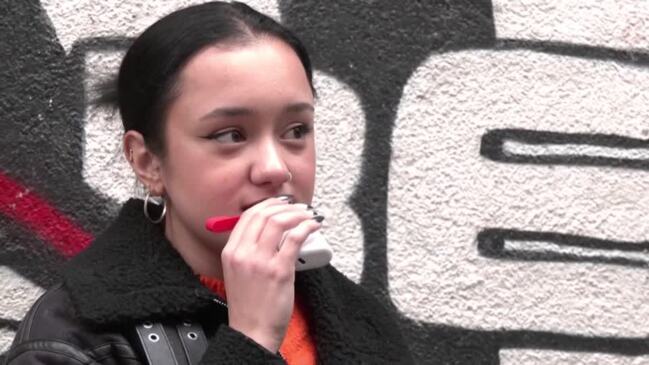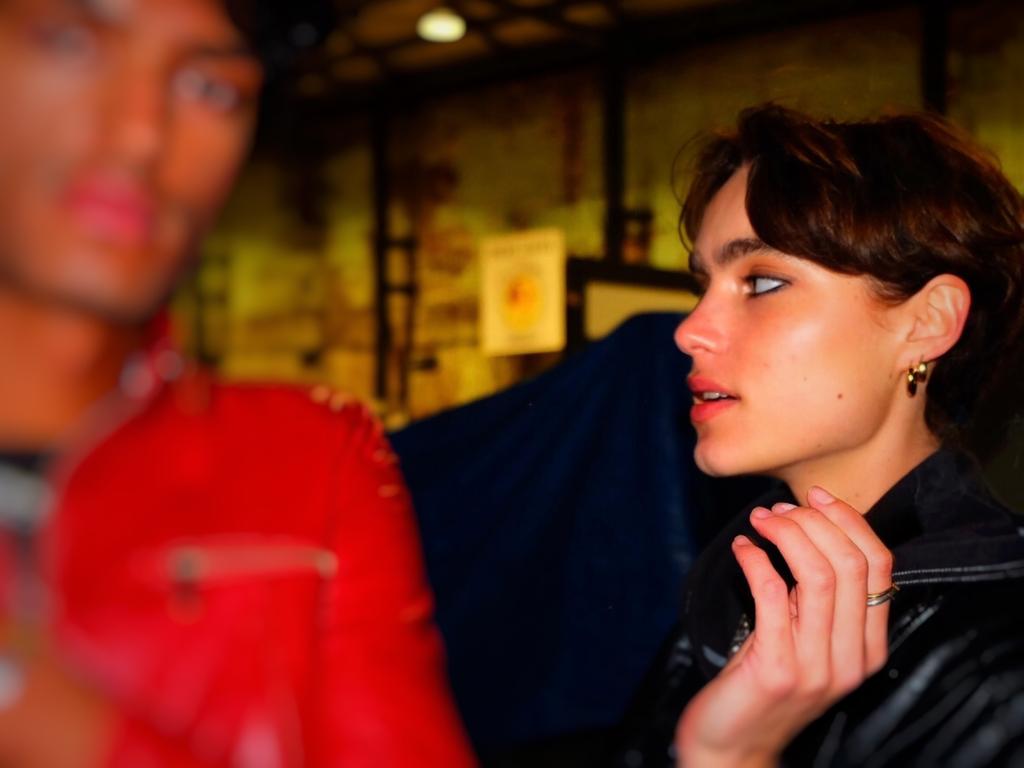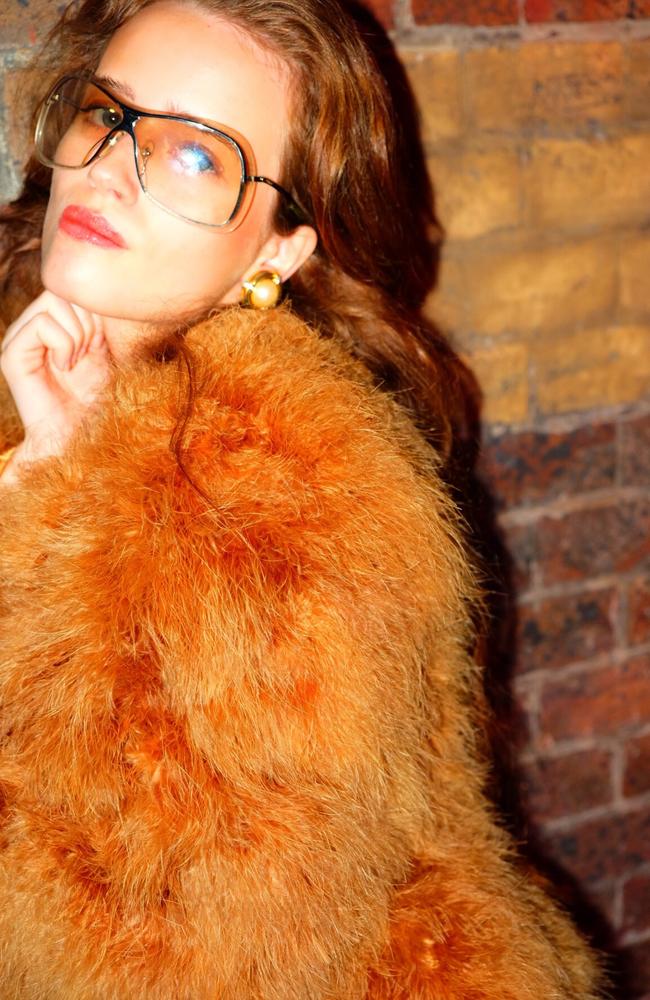‘It’s definitely back’: Gen Z’s dirty obsession
A cost of living crisis won’t stop some young people from adopting this craze we all thought had died. James Weir sees what the stink is about.

“Would you like a dart? They’re from Japan,” Will, 26, says as he blows a cloud of smoke over his shoulder.
He holds out a pack of cigarettes to a hip 20-something chick. There are no cancer warning stickers. Just Japanese writing on the pretty white and gold packaging.
He buys them from a convenience store in the inner-Sydney suburb of Redfern that imports them illegally and sells them for more than half the price of legally traded cigarettes – a hiding-in-plain-sight, wholly unregulated black market that costs the government more than $3 billion annually in tax losses.
Despite the blotchy skin and bloat, Will seems wise and confident. As if he knows everything – especially when he talks about how smoking can lead to higher testosterone levels and a better workout in the gym. Thanks to tobacco marketing executives of yore, that’s the perception that still lingers, like the smell.
“What’s the flavour?” the girl asks.
“They’re not flavoured!” one of their mates laughs, offering a smoke from his own imported pack.
The girl just got back from Coachella in the Californian desert, where Hailey Bieber made headlines for using the lip gloss holder on her phone case to store a cigarette. The festival was OK, says the girl.
“I sprained my ankle.”
She lights up.
Will and his mates are kicking back in the shadows of an alleyway outside the after-party of Australian Fashion Week.
The season’s hottest fads? Underwear as outerwear. Chunky boots. And more disturbingly, cigarettes.
Gritty ’90s style that segues into the space age hyper pop of the 2000s is à la mode.
Especially for Zoomers, most of whom weren’t even born until well into those decades. But being on trend is on the nose.

“There’s a generation of people who haven’t seen the black goo being squeezed out of lungs,” says professor Emily Banks, a public health physician and epidemiologist at the Australian National University, about the intense national anti-smoking campaign that saturated mass media between 1997 and 2001 – featuring rotting lungs, cancerous tongues and glass beakers of brown tar alongside the tag line “every cigarette is doing you damage”.
“There was a real lull – a good decade where we haven’t had it.”
Twenty-somethings are looking back at the era through rose coloured glasses – preferably of the wraparound shield variety that were all the rage at the time.
“Smoking cigarettes is definitely back,” says Alistair Fawcus, 26.
The TikToker has amassed more than 500,000 followers on the video platform with clips that nod to the Y2K era he was born in.
“Manual cigarettes are in, and electronic devices are out,” he says.
His girlfriend Brigette agrees with the shift away from e-cigarettes, which have been the focus of crackdowns.
“Smoking’s never ‘in’, but there’s a movement towards analog and nostalgia and vintage rather than modernity,” she says.

Right now, all the data from the Australian Institute of Health and Welfare points to a decline in cigarette smoking, which remains the number one cause of preventable death in Australia, while wastewater analysis for 2023 shows an increase in nicotine consumption across areas of Australia.
“The data is robust and the results speak to many decades of dedicated groundwork Australia has laid in tobacco control. But nicotine is incredibly addictive, and any promotion of harmful products – direct or subtle – to … impressionable young people … is designed to recruit new customers for the insidious Big Tobacco industry,” says Rachael Andersen, the director of Quit, an organisation that aims to reduce smoking rates.
“More than 20,000 Australians still die every year from smoking-related illness. We’ll continue to do all we can to support people to quit.”
Figures show vape use is skyrocketing in Australia and experts warn those who indulge in the habit are more likely to start smoking. That’s the case for Will, who, like many people, tries to justify the shift.
“Cigarettes are bad and everyone knows the effects – if you smoke consistently, you’ll get cancer,” he says. “But our generation is turning away from vapes now because cigarettes are a lot healthier for you.”
Professor Banks scoffs.
“You’re essentially bathing your lungs in toxic chemicals if you smoke,” she says. “Even what people might consider light smoking is incredibly harmful. One to five cigarettes a day will increase your chance of lung cancer ninefold.”
Federal Health Minister Mark Butler says boosting tobacco costs is one of the most effective and efficient ways that governments can reduce consumption – especially among young people.
“Many smokers and recent ex-smokers report that high prices of tobacco products are a key factor motivating their attempts to quit or cut down smoking,” he says.
“Research in Australia and overseas has found that lower income groups such as young people and lower socio-economic populations tend to be responsive to price increases.”
Uni student Victoria Pennel, 18, says high prices could be what makes or breaks her new habit. She only started smoking cigarettes a few weeks ago while on a getaway to a country town that didn’t stock vapes.
“Smoking is very European and Australia is really dying out of this European culture,” she says while juggling a cigarette, her handbag, car keys and a cardboard cigarette packet featuring an image of rotting teeth.

She spent $32 on a pack of cigarettes at a newsagency and now wonders how she’s going to maintain the social habit.
“That’s the cheapest one I could find – spending 50 bucks on cigarettes is kind of a lot,” she says.
But Rohan Pike, a former Australian Federal Police and Australian Border Force officer, who helped establish the original tobacco strike team, says hiking the prices of tobacco isn’t enough to combat smoking.
“There’s a fallacy behind Australia’s tobacco policy that the more price hikes you have and the more unattractive you make legal cigarettes, the more people are gonna quit – or provide revenue for the government by buying the taxed product,” he says.
“And that’s all well and good as long as there’s not an easily available and flourishing black market where people can get it everywhere and very easily. But that is the case. So when they’ve got to make a decision about whether they’re going to spend $50 on a pack of cigarettes or $20 on a pack of cigarettes, everyone is going to pick the $20 packet, and that’s what they’re doing.”
At major convenience stores across Sydney, illegal cigarettes can be purchased by young people alongside a packet of Mie Goreng for dinner, with spare change left over.
Packs – ranging from $13 to $25 – are kept under the counter, in drawers and in the cash slots of the till. Some shop attendants price match with rival stores. Others offer special deals: two packs for $25 cash.
“Smuggled in. Black market,” says one shop owner on the Newtown party strip in inner-Sydney as he pulls open a drawer filled with illegal imports.
Noticeably missing are the graphic cancer warning labels mandated by the Australian government in 2012.
The Australian Taxation Office estimates the black market takes up 13.1 per cent of the tobacco trade but Mr Pike believes it’s closer to 25 per cent.
“In the budget they were predicting $15 billion to be gathered through legal sales and they gathered $10 billion – so there’s $5 billion that’s just gone missing in the space of a year and clearly that’s gone straight to the black market,” he says.
In January, the federal government announced a $188.5 million crackdown on black market tobacco, with the bulk of the funds being used to stop illegal imports from reaching Australia. An illegal tobacco and vape commissioner is also being appointed. Violent wars over the black market cigarette trade have exploded in Victoria.
Associate professor at the University of Sydney school of public health Becky Freeman questions why tobacco retailers across the country aren’t restricted by the same guidelines as bottle shops.
“It’s just woeful that Australia doesn’t already implement a tobacco licence system,” she says, pointing to how the model applied in Tasmania has resulted in a number of retailers getting out of the tobacco market.
“Licensing tobacco retailers is the number one thing to do because then we can enforce what they’re selling. If you want to be a tobacconist selling a deadly and addictive product, there should be a high fee for that.”
Back on the concrete lane that has become a makeshift runway for attendees outside fashion week, one young guy with an unbuttoned shirt wields a lit cigarette while posing for a camera.
“I started smoking because of fashion week,” he says. “It’s the vibe.”
Nearby, a male model lights up. He only started smoking a few months ago while in Paris. Bringing the habit back home with him, he now carries a gold metal vintage-style cigarette case. Online marketplace Etsy says there has been a 64 per cent increase in searches for vintage and antique lighters over the past three months.


“The data suggests we are still seeing a drop (in smoking) but one of the things we know from smoking is if we take our foot off the pedal, it goes back up,” says Professor Banks. “With this re-glamorisation, it could go back up again.”
Young Hollywood celebrities like Timothée Chalamet and Lily-Rose Depp have been snapped puffing by paparazzi lately. At the recent London Fashion Week runway show for Edward Crutchley, models were accessorised with unlit cigarettes.
Big Tobacco might be restricted by advertising bans, but that doesn’t seem to matter. The internet has become a nostalgic scrapbook of nicotine-scented “sleaze culture”.
The Instagram account @mka_smoking, which features pictures exclusively of Y2K tween stars Mary-Kate and Ashley Olsen puffing on cigarettes, has over 12,000 followers.
Professor Freeman, whose research focuses on tobacco control and the influence of the internet and social media, says cigarette marketing has always been “romanticised with nostalgia”.
“In the ’90s you had advertising that emulated the ’30s – noir with black and white imagery,” she says. “So there’s always been this aspect of smoking promotion that’s untouchable glamour.”
At 25, Gregg Andrews was still in nappies when his personal icon Kate Moss, 50, was at her debaucherous hard-partying peak on the international modelling scene.
“I’m a huge fan of Kate Moss and she’s still smoking,” he exhales.
He hates his “smoking face” but that doesn’t stop him. He seems more world-weary than he should be.
“I was vaping for a short time but then vaping got boring,” he says.
When it comes to sucking the glamour out of smoking, advertising guru Dee Madigan says young people don’t care if they’re told they’ll die of lung cancer in 50 years.
More Coverage
“Tell them they stink, then all of a sudden you might get their attention,” she says. “You stink.”
Until then, being on the nose is in fashion – and affordable.
Facebook: @hellojamesweir





